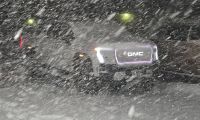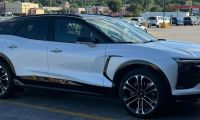Many publications, including this one, offer expert opinions on whether a vehicle is good in snow or not. While the info is helpful, how do you know it can be trusted? On what basis is the testing valid? With so much riding on such content, you deserve to know how the conclusion is arrived at. Here’s a peek at how the best vehicle testers know if a vehicle is good in winter conditions. Or if it isn’t. 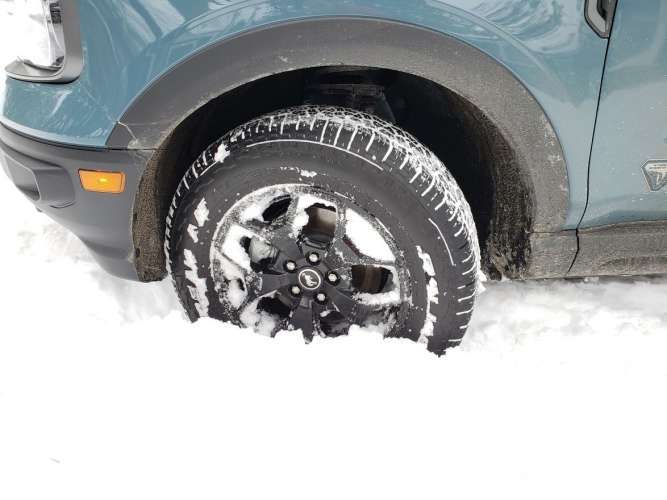
It All Starts With Tires Any veteran vehicle tester who conducts winter testing will tell you one thing upfront: A good set of winter tires like Bridgestone Blizzaks, Michelin X-Ice, or any other trusted brand will transform a so-so vehicle into a good winter vehicle in terms of starting, stopping, and turning. More on winter tires here. 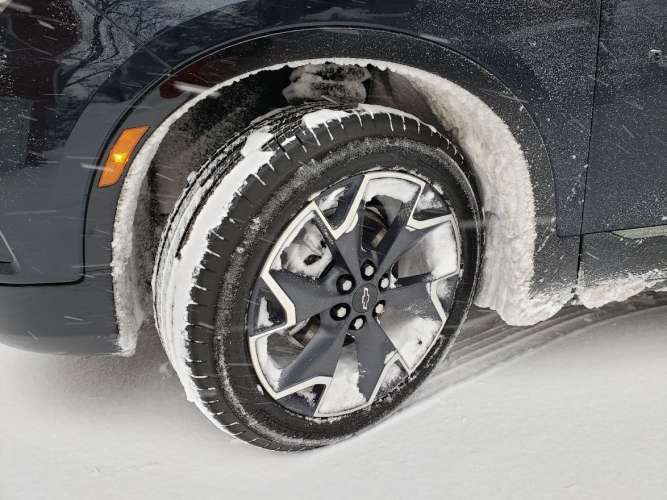 However, consumers deserve to know how the vehicle they are shopping for will do on the rubber the manufacturer selected. That is usually an “all-season” tire that has a design that emphasizes fuel economy and tire tread life. This means it has three strikes against it in winter weather.
However, consumers deserve to know how the vehicle they are shopping for will do on the rubber the manufacturer selected. That is usually an “all-season” tire that has a design that emphasizes fuel economy and tire tread life. This means it has three strikes against it in winter weather. 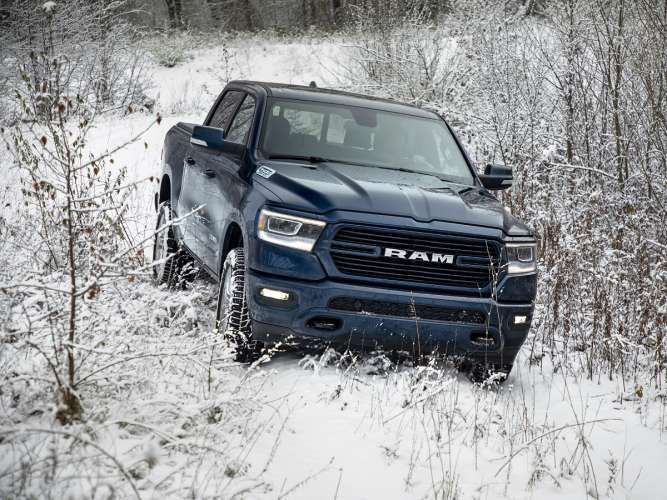 Not all manufacturers choose a tire that is lousy in snow. When the choice is a smart one, that should be pointed out in the story. Some examples of vehicles with great winter rubber include the RAM North Edition 1500 and Ford Bronco Sport First Edition. Both come with winter-rated tires displaying the three-peak mountain snowflake symbol. Others include the Toyota Sienna AWD, which we tested recently and found had a great tire for winter driving, despite being an all-season-rated tire.
Not all manufacturers choose a tire that is lousy in snow. When the choice is a smart one, that should be pointed out in the story. Some examples of vehicles with great winter rubber include the RAM North Edition 1500 and Ford Bronco Sport First Edition. Both come with winter-rated tires displaying the three-peak mountain snowflake symbol. Others include the Toyota Sienna AWD, which we tested recently and found had a great tire for winter driving, despite being an all-season-rated tire. 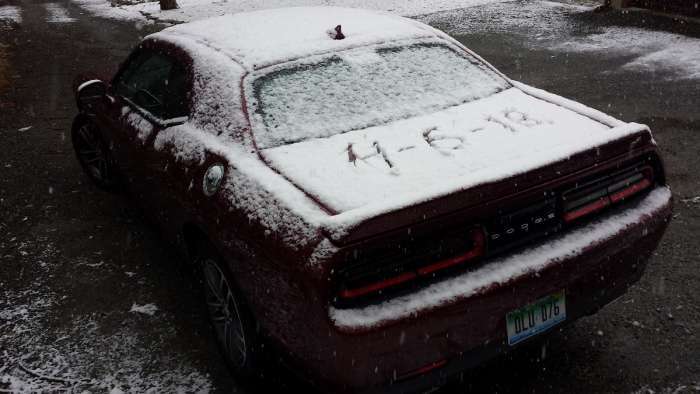
Vehicle Tester Training and Experience Many vehicle testers also find wheel time in vehicles on closed courses in winter. For example, Dodge rented a racetrack in New Hampshire a couple winters back and invited media members from all over America to come and test its Challenger GT AWD in deep snow and ice. This type of closed-course testing allows testers to learn how to push a vehicle up to its limits, to its limits, and then past them. Safely. We saw more than one Challenger being shoveled out of a snowbank during that three-day event. That is proof that a tester found the limits of that vehicle. And went a bit further. It is not practical, safe, or affordable to learn how to do that on a public road in your own personal car. 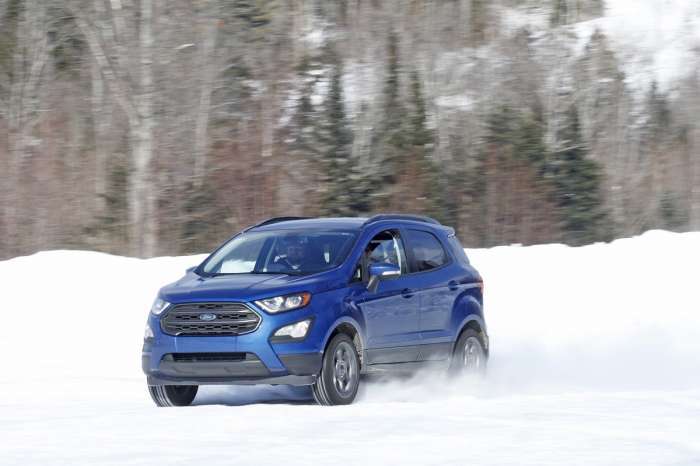 Similarly, Ford has rented space at the Team O’Neil Rally School’s facility in Northern New Hampshire to educate testers in both classroom and also multiple real-world scenarios on its test tracks. Professional rally drivers explained the techniques and methods the world’s best winter drivers employ to make the most of a vehicle.
Similarly, Ford has rented space at the Team O’Neil Rally School’s facility in Northern New Hampshire to educate testers in both classroom and also multiple real-world scenarios on its test tracks. Professional rally drivers explained the techniques and methods the world’s best winter drivers employ to make the most of a vehicle. 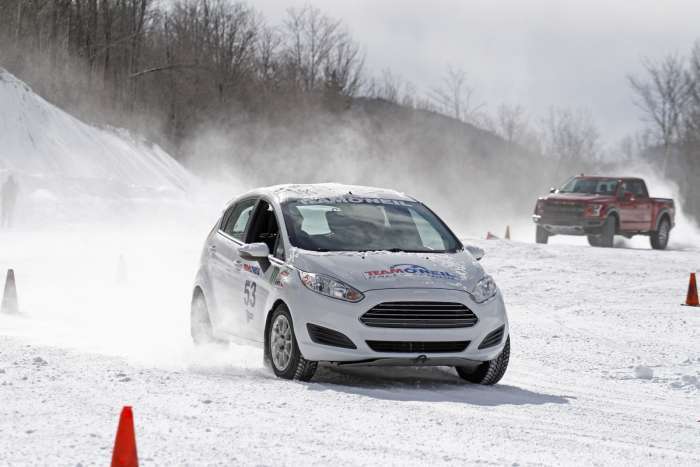 Media groups also hold events where various vehicles are tested. One even hosts testing events on a frozen lake.
Media groups also hold events where various vehicles are tested. One even hosts testing events on a frozen lake.
If you are a fan of Torque News, you may remember Aaron Turpen. He was one of our longest-running writers and he is an officer in a media group that conducts closed-course winter testing events. Aaron was kind enough to add this section to our story: “There are several ways automotive journalists will test a vehicle for winter readiness. Living in Wyoming, I often get to drive in winter conditions much of the year. Otherwise, I’ve learned to observe and report how vehicles handle the snowpack or ice in wintertime. One winter testing event I attend annually is held in the mountains of Colorado. We drive vehicles from various participating manufacturers in an unplowed parking lot and on a frozen lake to test traction and safety systems. At that kind of enclosed, safe environment, we're free to turn off all of the safety "nannies" and see what happens when we drive like idiots versus when we drive "average" with those systems versus the results when we drive extremely carefully with them in place. Many vehicles behave very differently when they have no safety systems on and it's always interesting to find out what those systems are doing to keep the vehicle straight, upright, and going in the direction the driver intends.” Another Torque News writer and media club officer, Keith Griffin, added this to our story: “I participated in a great Jaguar driving program maybe 15 years ago on an ice track outside of Aspen. A lot of allegedly better drivers ended up smashing both ends of the car into the bales of hay set up at the curves. I learned that steering response and throttle control are two important aspects of a strong winter vehicle. Too much torque is a bad thing on a snowy day and slow steering response is going to put you into the hay bales (or worse). The best all-wheel-drive systems read the road conditions.” 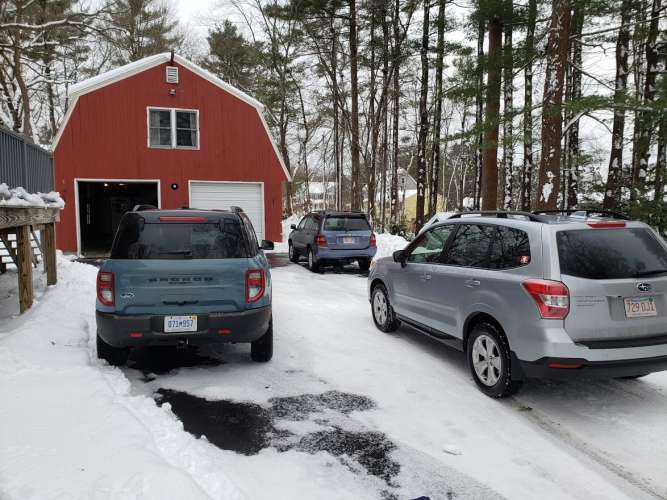
Benchmark Winter Test Vehicles Another way that vehicle testers can provide feedback is by determining what is the best possible vehicle and then comparing it to a new vehicle. For example, the Subaru Forester is widely regarded as an excellent vehicle in snow. Add winter tires and it is perhaps the best all-road winter vehicle made. By driving examples like this back to back with some of the most promising winter vehicles, we can judge on that very day how a contender ranks. 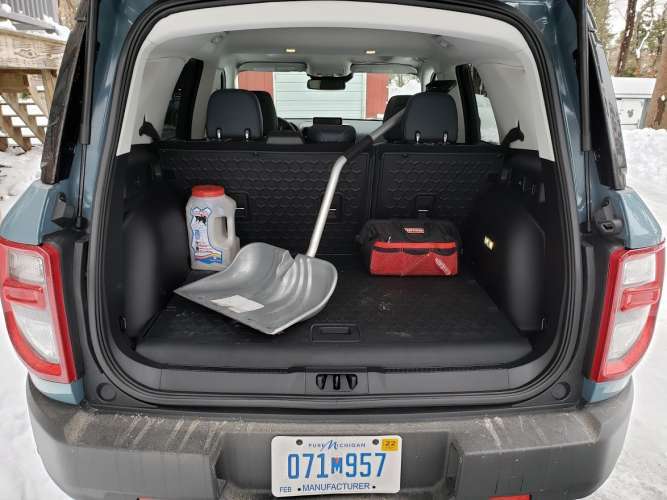
Full Send Vehicle testers are careful not to damage the vehicles entrusted to their care. However, that doesn’t mean we won’t take a vehicle to the point of being stuck. We will. Winter vehicle testing means carrying sand and a shovel in the trunk. And it can mean being ready to hike out to the nearest cell coverage if need be. 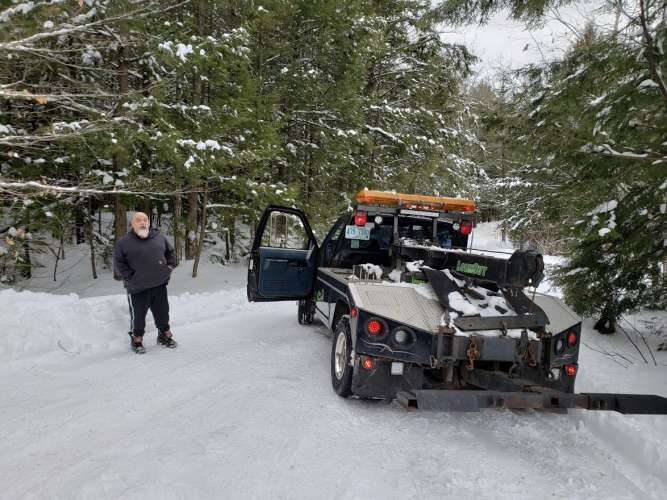 I personally conduct much of my winter testing on seasonal roads that are closed to the public in winter. I recently found the limits of a new vehicle equipped with winter-rated tires. Even the best winter vehicles eventually stop when the snow is up the doors a little too high. How high is too high is what we seek to find out.
I personally conduct much of my winter testing on seasonal roads that are closed to the public in winter. I recently found the limits of a new vehicle equipped with winter-rated tires. Even the best winter vehicles eventually stop when the snow is up the doors a little too high. How high is too high is what we seek to find out.
Consumer Reports Test Track and Ice Rinks One organization we have great respect for is Consumer Reports (CR). This group employs testing experts with technical backgrounds and goes as far as anyone to wring out the good winter vehicles from the so-so models. CR has its own New England track to test on, but it will rent skating rinks for some tests. CR went so far as to create standards for the ice friction. That is serious dedication. CR generously offers its data to other publications for use in winter tire reporting. 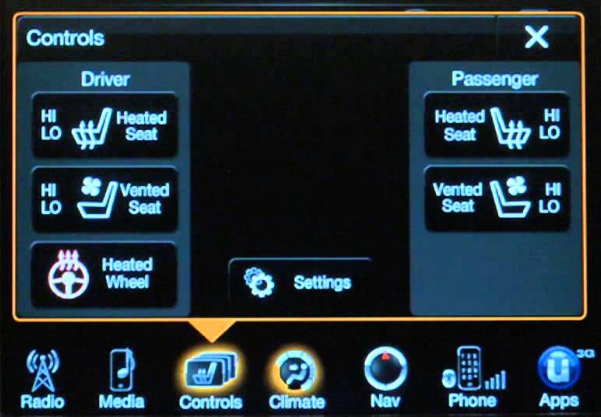
A Good Winter Vehicle Isn’t Awarded Based On Driving Alone Features that make life more livable in winter get attention in reviews. For example, windshield heaters that keep windshield wipers from freezing up. Headlight squirters that blast away frozen slush. Of course, heated seats and steering wheels are a must for a top-rated winter vehicle. Remote start is giving way to electric vehicle cabin preconditioning. Keith Griffin broke down how a winter vehicle tester will evaluate an interior by saying, “Years of winter testing has also taught me that everything needs to be intuitive in a cold vehicle. There's nothing worse than fumbling to find the heating controls in a car that has been sitting outside overnight and it's 6 degrees.” Can a vehicle’s controls be operated when one is wearing gloves? We find out. 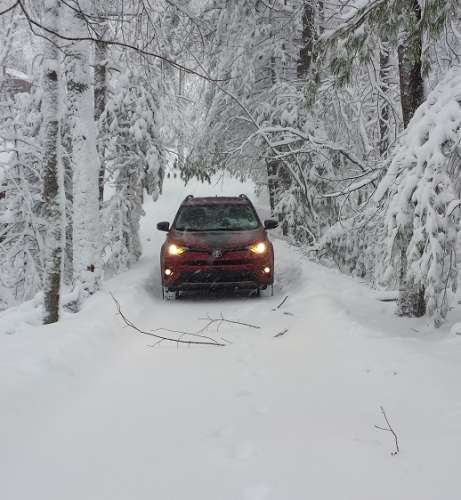 Winter testing is essential to those of us in the media who live life below zero much of the year. We hope this behind-the-scenes story sheds light on why some publications spend time and energy to bring you a report on which vehicles are “good in the snow.” If you have any life lesson stories you wish to share about your own winter experiences in cars, please post a comment below.
Winter testing is essential to those of us in the media who live life below zero much of the year. We hope this behind-the-scenes story sheds light on why some publications spend time and energy to bring you a report on which vehicles are “good in the snow.” If you have any life lesson stories you wish to share about your own winter experiences in cars, please post a comment below.
John Goreham is a long-time New England Motor Press Association member and recovering engineer. Following his engineering program, John also completed a marketing program at Northeastern University and worked with automotive component manufacturers. In addition to Torque News, John's work has appeared in print in dozens of American newspapers and he provides reviews to many vehicle shopping sites. You can follow John on Twitter, and view his credentials at Linkedin










